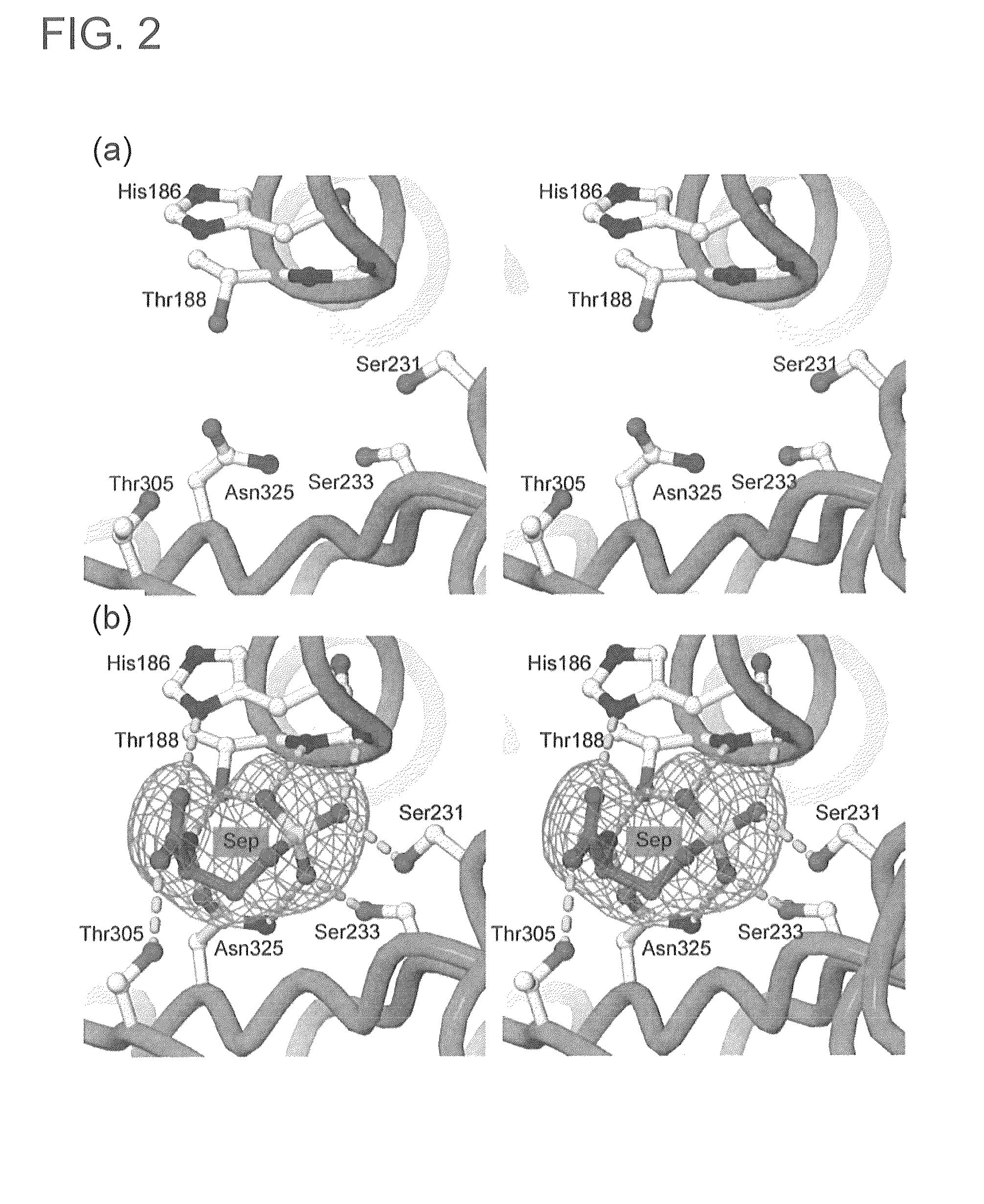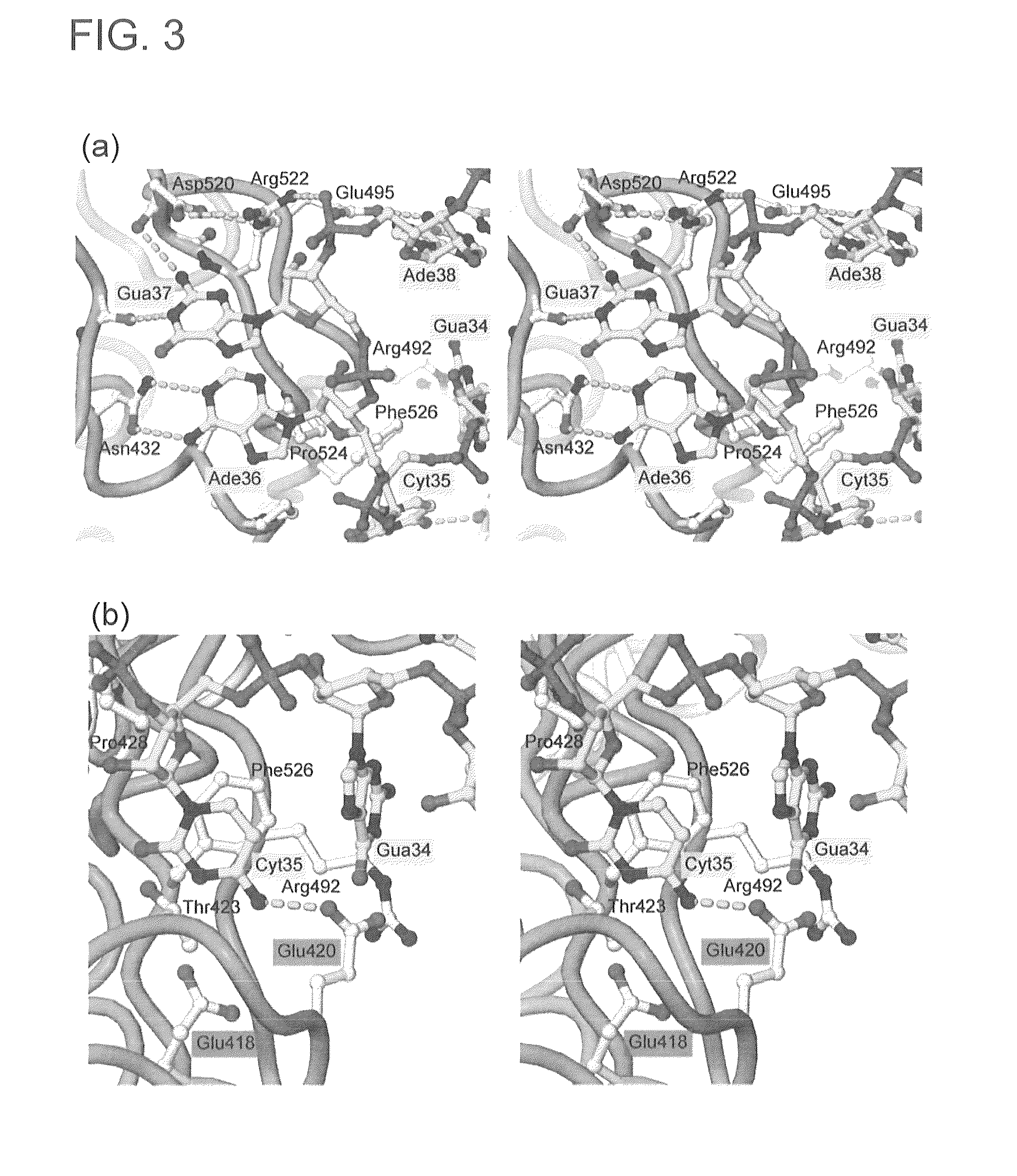Mutant SepRS, and method for site-specific introduction of phosphoserine into protein using the same
a technology of phosphoserine and seprs, which is applied in the field of mutational phosphoserine synthetase, can solve the problems of difficulty in designing a modified aars capable of recognizing phosphoserine, and no precedent in which this amino acid is successfully achieved
- Summary
- Abstract
- Description
- Claims
- Application Information
AI Technical Summary
Benefits of technology
Problems solved by technology
Method used
Image
Examples
examples
1. Method:
[Preparation of Protein and tRNA]
[0052]A full-length SepRS gene derived from a thermophilic sulfur bacterium (Archaeoglobus fulgidus) was cloned into a plasmid pET26b (Novagen) utilizing restriction enzyme cleavage sites NdeI and SalI. The introduction of mutation was carried out employing a PCR method. Wild type and mutant enzymes were each excessively expressed using an E. coli BL21 codon plus (DE3) strain (Stratagene). A SepRS protein was thermally treated at 80° C. for 30 minutes and purified by means of column chromatography using Q-Sepharose FF (GE Healthcare) and unoQ (Bio-Rad). The purified enzyme was dialyzed against a Tris hydrochloride buffer (pH 8.0) containing 5 mM of magnesium chloride, 150 mM of sodium hydrochloride and 5 mM of β-mercaptoethanol and concentrated to about 9 mg / mL. A selenomethionine-labeled protein was excessively expressed using an E. coli B834 codon plus (DE3) strain and purified in the same method as in the naturally occurring enzyme. A tR...
PUM
| Property | Measurement | Unit |
|---|---|---|
| pH | aaaaa | aaaaa |
| concentration | aaaaa | aaaaa |
| pH | aaaaa | aaaaa |
Abstract
Description
Claims
Application Information
 Login to View More
Login to View More - R&D
- Intellectual Property
- Life Sciences
- Materials
- Tech Scout
- Unparalleled Data Quality
- Higher Quality Content
- 60% Fewer Hallucinations
Browse by: Latest US Patents, China's latest patents, Technical Efficacy Thesaurus, Application Domain, Technology Topic, Popular Technical Reports.
© 2025 PatSnap. All rights reserved.Legal|Privacy policy|Modern Slavery Act Transparency Statement|Sitemap|About US| Contact US: help@patsnap.com



